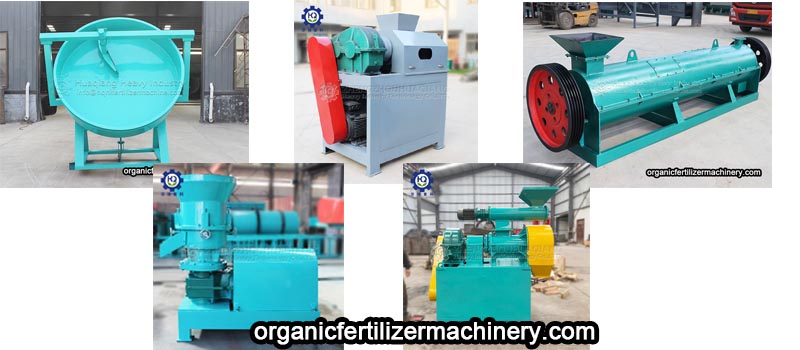In an organic fertilizer production line, the granulator is the core equipment that determines the product's forming rate, granule quality, and production efficiency. Different raw material characteristics, capacity requirements, and product standards correspond to different types of granulators. Below is a detailed explanation of some of the most widely used equipment in the industry.

Disc granulators are a classic choice for organic fertilizer production, dominating the low-to-mid-range market due to their simple structure and easy operation. They use the rotation of an inclined disc to tumble the material, combining this with appropriate moisture to achieve granule agglomeration and forming. They are suitable for processing manure materials with moderate moisture content, such as chicken manure and sheep manure. This equipment has low energy consumption and low maintenance costs, achieving a forming rate of over 85%, producing round and uniform granules. It is particularly suitable for daily production in small and medium-sized organic fertilizer plants. However, when processing high-fiber, low-viscosity raw materials, pretreatment processes are required.
Extrusion granulators are divided into roller extrusion and ring die extrusion. Their core advantage is that they eliminate the need for drying and allow for direct granulation. Double-roller extrusion granulators form granules by high-pressure extrusion of materials using two rollers. They are suitable for coarse-fiber raw materials such as straw and medicinal residue, producing high-density granules that are less prone to collapsing and retain more nutrients from the raw materials. Ring-die extrusion granulators, on the other hand, form granules through die holes, offering higher capacity and more uniform granule length, making them suitable for large-scale production. However, they require strict control of raw material moisture content, maintaining it between 15% and 20%.
Rotary drum granulators are the preferred equipment for large-scale organic fertilizer production lines. They utilize a combination of rotating drums and spray atomization technology, where materials are granulated through impact and rolling within the drum. They offer high throughput and a high granulation rate, are adaptable to various mixed raw materials, and produce granules with good strength and easily controllable moisture content. Combined with drying equipment, they enable continuous large-scale production. The advantage of this equipment lies in its adaptability, capable of processing mixed raw materials such as manure, straw, and mushroom residue. However, the equipment investment and energy consumption are relatively high, making it suitable for large enterprises with a capacity of 50,000 tons/year or more.
Furthermore, the variety of organic fertilizer granulators is constantly expanding, with continuous optimization for specific scenarios. Among them, the new type organic fertilizer granulator is the most representative. This type of granulator employs a new wet continuous pusher granulation technology. Its core working principle involves feeding the mixed materials into the granulation drum, where high-speed rotating stirring teeth powerfully stir, impact, and tumble the materials, using friction, centrifugal force, and the material's own viscosity to gradually agglomerate them into granules.
When selecting a machine, it is necessary to comprehensively consider the characteristics of raw materials, production capacity requirements, investment budget, and environmental protection standards to choose a suitable organic fertilizer granulation machine in order to ensure the high efficiency of organic fertilizer production and the stability of product quality.